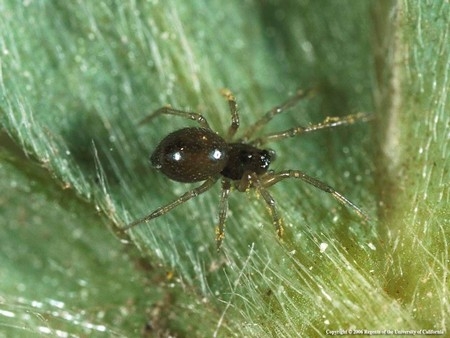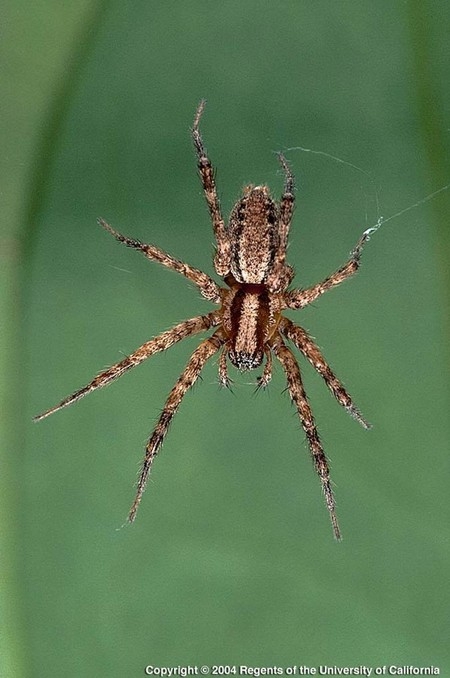This time of year, as the heat increases and things start to get dusty, you might see a number of webs on your plants. Uh oh. Are these webs a sign of spider mites?
Chances are the webs you see covering the ends of branches are actually created by spiders, a close relative to spider mites, and are nothing to worry about. Spiders are predators of insects, some of which are pests, and the webs are used for capturing prey. According to the UC Cooperative Extension, there are at least 54 families and over 1,000 species of spiders in California (https://ipm.ucanr.edu/natural-enemies/spiders/#gsc.tab=0).
Most spiders are beneficial to your garden. Think of them as a free pest control service and remember that among poisonous spiders only the widow spiders are commonly found in California, and these generally stay hidden in places like cellars or woodpiles. And even though the vast majority of spiders are harmless, that doesn't mean you want them surprising you in the garden! You can learn to recognize the many types of spiders hunting among your plants. Some of the more common web-spinning spiders you might see include:
• Dwarf Spiders: These tiny spiders hunt during the day and produce sheet-like or irregular crisscross webs on plant surfaces. You will find them in the plant canopy and in ground litter. They are common in fields and vegetable crops.
• Cobweb Spiders: Hang upside down in sticky, irregularly spun webs waiting for prey. Most are small and harmless, although widow spiders fall into this category.
• Funnel weavers include the Common House Spider: These spiders hang out in the garden, and on walls and ceilings in the house. They feed during the day and night, hiding and waiting for their prey near the ground in most types of vegetation. They spin funnel shaped webs, often with a flat extension covering the plant or soil. Their webs become conspicuous in morning light after collecting dew.
• Orb weavers or Garden Spiders: Often large and colorful, these spiders spin elaborate webs in concentric circles in the garden. They wait in their webs or nearby for prey to become entangled. Often, we can tell the species of the spider by the pattern woven into their web.
• Sac spiders: Typically nocturnal, Sac spiders live in silk tubes in places such as corners, beneath plants, or on bark, and stalk their prey at night. They occur both indoors and out.
Spiders that don't spin webs include the jumping spiders, lynx, crab and wolf spiders. Like their web-spinning cousins, these spiders are beneficial in your garden, preying on insects and other pests.
Are the webs damaging my plants?
In these photos you can see spider webs on a Daphne shrub, some succulents, and a Japanese Pieris. Notice there is no visible plant damage associated with the webs, although occasionally some dead leaves may get caught in a web, such as with the Japanese Pieris. A closer inspection shows the web hasn't caused the leaf damage — in this case it's sunburn from the recent heat wave.
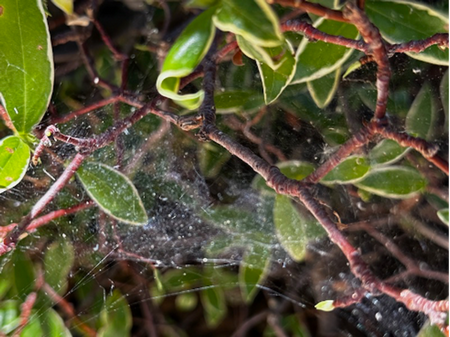
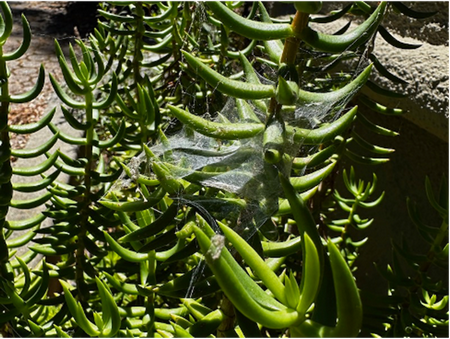
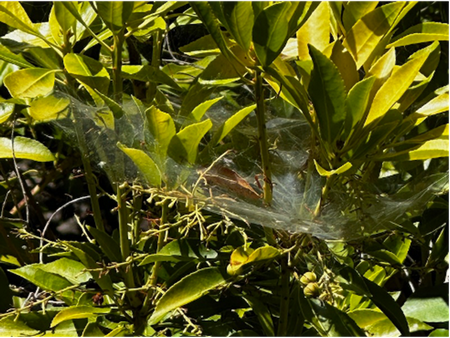
Try to refrain from using insecticides as they aren't necessarily effective on the spiders, and you risk killing other beneficial insects. You can remove cobwebs from your plants by sweeping or hosing them away, or if inside, with a vacuum cleaner or mop. Instead, learn to recognize the spiders in your garden and you will come to appreciate the antics of the jumping spiders, or the beauty of a web with droplets of dew shining in the early morning.
• Quick Tips about spiders: https://ipm.ucanr.edu/QT/commongardenspiderscard.html
• Video to help you learn to identify spiders: https://www.youtube.com/watch?v=Bs-OUvY8L80.
• Identifying and managing spiders: https://ipm.ucanr.edu/PMG/PESTNOTES/pn7442.html
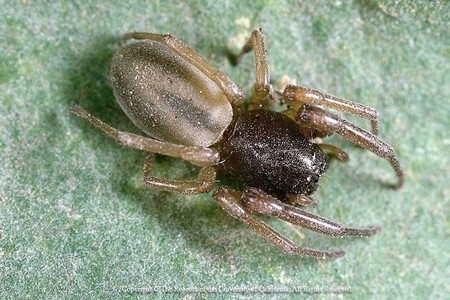
Help Desk of the UC Master Gardeners of Contra Costa County (RDH)
